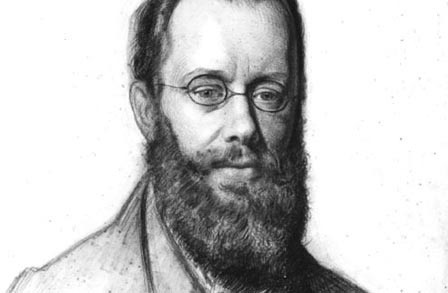Emily Dickinson is an American poet born in 1830 in Massachusetts. She has lived her life in solitude, and hardly had let any visitors or friends meet her. It was only after her death her poems were discovered, and were published. Her poems did not have any kind of titles to it; hence the first sentences of all the poems were taken as the title of her poems. The title of this poem is I started Early—Took my Dog—, and here, we are going to look at the interpretation, style, and structure of the poem.
I started Early—Took my Dog—
And visited the Sea—
The Mermaids in the Basement
Came out to look at me—
In these lines, the poet is talking about an early morning stroll with her dog by the sea, and how she meets mermaids, who emerge from the bottom of the sea to have a look at her. These lines are imagination of Dickinson, where she imagines a greeting by mermaids. It is said that she has never been to a sea, or a harbor, and she uses her imagination by using fairy tales about mermaids. It is also said that she had written about her normal walk with her dog in the yard, and transformed the environment into about a sea in her poem. This becomes clear in the further lines.
And Frigates—in the Upper Floor
Extended Hempen Hands—
Presuming Me to be a Mouse—
Aground—upon the Sands—
In this stanza, Dickinson says that the mermaids bring about their arms in protection while emerging out of the sea, extending their hands to reach the poet. As they look at the poet through the water, they presume the poet to be a small mouse standing upon the sands. Words like “Upper Floor”, “Hempen”, and “Mouse”, which affirms that the sea is also a metaphor used for the basement.
But no Man moved Me—till the Tide
Went past my simple Shoe—
And past my Apron—and my Belt
And past my Bodice—too—
In these lines, the poet refers to the sea as a strong man, and gives an erotic touch to the poem. With each lines, she describes how mesmerised she is by the strength of the sea, and how it begins with her shoes, and reaches till her bodice, making them wet. There is a sense of fear of engulfment in these lines, but the poet shows how she is enjoying the sublimity of the moment.
And made as He would eat me up—
As wholly as a Dew
Upon a Dandelion’s Sleeve—
And then—I started—too—
In these lines, Dickinson describes how the sea tires to engulf her and wets her entire body. She describes it with the image of dew on the sleeve of a Dandelion, and how it falls inside the Dandelion. The poet starts further towards the sea too, to disappear inside the sea.
And He—He followed—close behind—
I felt His Silver Heel
Upon my Ankle—Then my Shoes
Would overflow with Pearl—
In these lines, the poet is describing about the waves going back towards the sea. As she moves further to get engulfed in the sea, the waves follow her right back, and start withdrawing. As the waves move back, she feel the blade of the wave upon her ankles, and the foaming bubbles too, which appears like an overflow of peals on her feet.
Until We met the Solid Town—
No One He seemed to know—
And bowing—with a Mighty look—
At me—The Sea withdrew—
The poet now talks about her experience with the waves, that the waves came to her, as if it had not known anyone else, but the poet and he comes to embrace her in his arms. And as he left, the wave bows down graciously, and leaves. The poet is describing the phenomena of the waves getting lower as they draw back and disappear in the sea.
Some online learning platforms provide certifications, while others are designed to simply grow your skills in your personal and professional life. Including Masterclass and Coursera, here are our recommendations for the best online learning platforms you can sign up for today.
The 7 Best Online Learning Platforms of 2022
- Best Overall: Coursera
- Best for Niche Topics: Udemy
- Best for Creative Fields: Skillshare
- Best for Celebrity Lessons: MasterClass
- Best for STEM: EdX
- Best for Career Building: Udacity
- Best for Data Learning: Pluralsight















